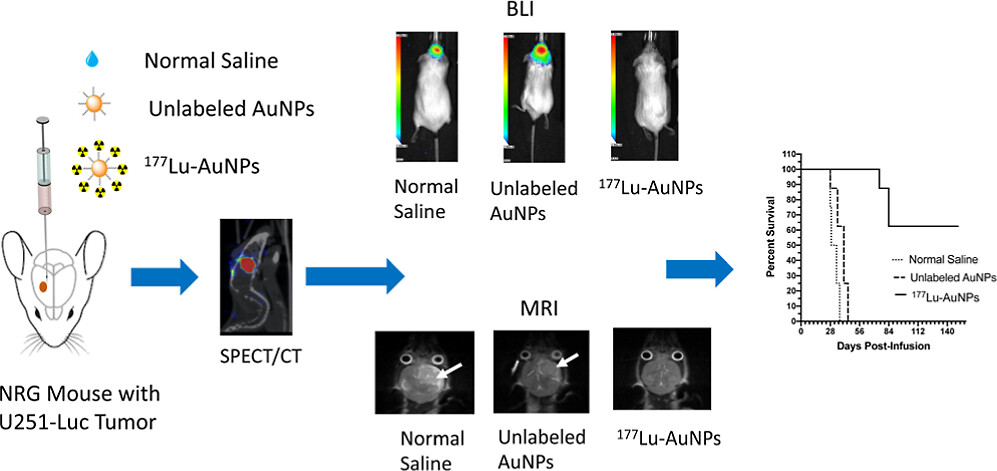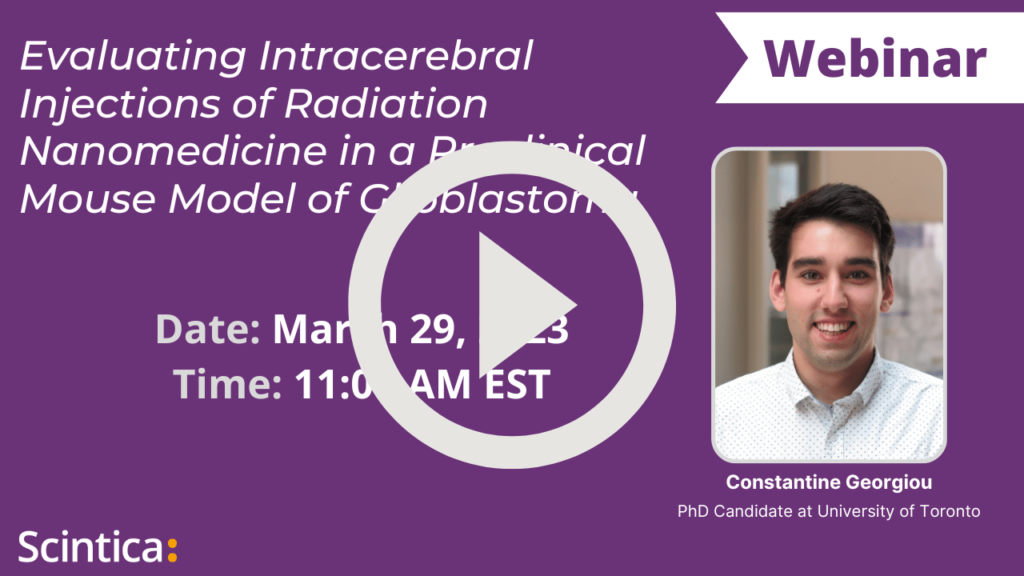(March 29, 2023) Webinar: Evaluating Intracerebral Injections of Radiation Nanomedicine in a Preclinical Mouse Model of Glioblastoma
Learning Objectives:
- Understand convection-enhanced delivery and its implication for brain tumour treatment
- Understand how gold nanoparticles can be used to construct radiation nanomedicine
- Learn how to evaluate the safety, toxicity, and effectiveness of radiation nanomedicines
Overview:
Glioblastoma is a devastatingly aggressive type of brain tumour with a low median, and 5-year survival that has lacked new treatment options, in part due to the inability of therapeutic agents to cross the blood-brain barrier. Convection Enhanced Delivery (CED), a clinical neurosurgical strategy has been used to locoregionally deliver various therapeutic agents within the brain. Radiotherapeutic agents, such as 177Lu-labeled gold nanoparticles (177Lu-AuNP), hold promise for treatment of glioblastoma when administered by CED. Intratumoural injections of 177Lu-AuNP administered by CED was evaluated in an orthotopic xenograft mouse model of glioblastoma. SPECT/CT and biodistribution studies were used to evaluate the fate of the 177Lu-AuNP after injection. These results were used to estimate organ radiation absorbed doses. Normal tissue toxicity was evaluated to confirm the safety of the injections. Magnetic resonance imaging and bioluminescence imaging were used to monitor tumour growth after administration of 177Lu-AuNP, and median survival was estimated.

About the Speaker (s)

Constantine Georgiou
PhD Candidate at University of Toronto
Constantine Georgiou is a PhD Candidate in the Department of Pharmaceutical Science at the University of Toronto under the supervision of Dr. Raymond Reilly. He completed his undergraduate degree in Pharmaceutical Chemistry at University of Toronto. His graduate research focuses on evaluating intratumourally injected radiolabeled gold nanoparticles in preclinical models for the treatment of glioblastoma.
